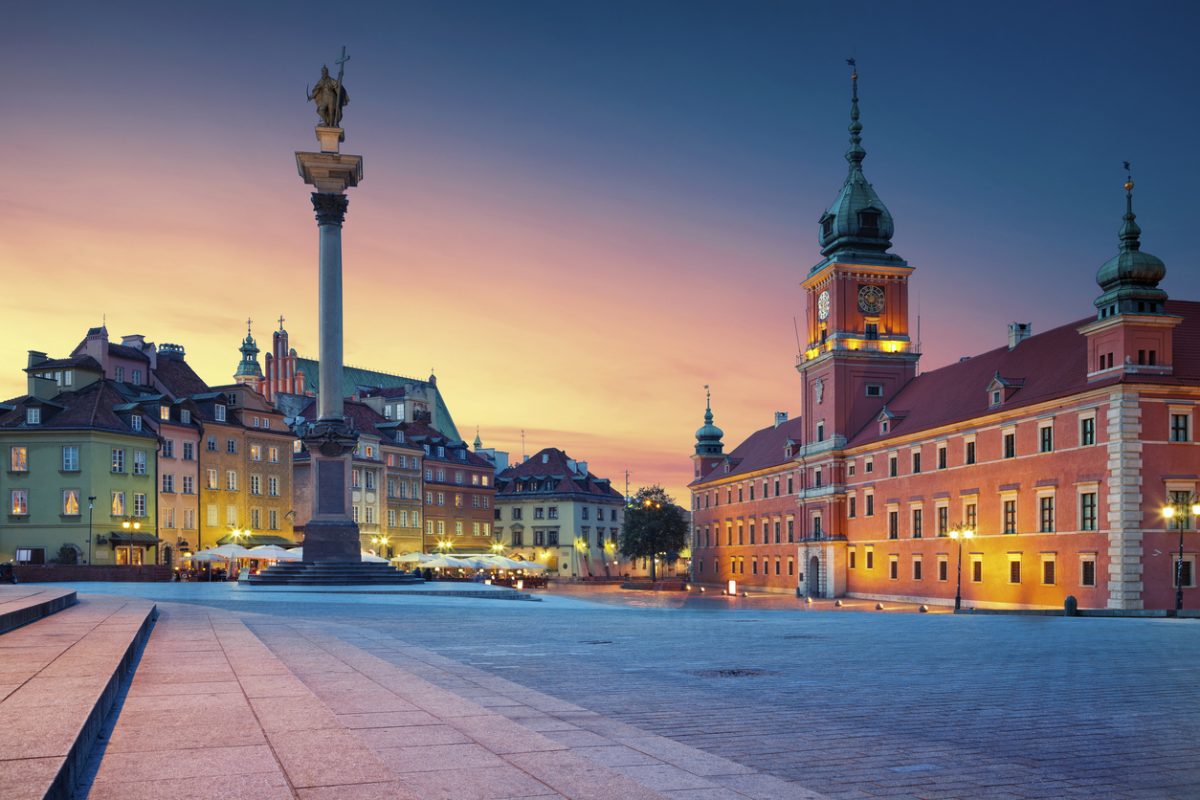Are you planning a trip to Warsaw in November? Here’s my complete guide to the Polish capital at the start of winter!
Warsaw is one of my favourite cities in Europe.
It’s certainly not an ugly city, but its “Old Town” was completely rebuilt after the Warsaw Uprising in the Second World War.
This means that it doesn’t have the timeless charm of some of the continent’s other metropolises.
But Warsaw’s charm lies in this resilience.
The entire city has a strong fighting spirit, and as you explore and learn more about the city’s history – from being part of Prussia to its place in Russian-occupied Poland to its sombre World War Two history to the Soviet time – you’ll gain a real respect for how the city has persevered and developed – and nowadays, stands as an excellent tourist destination.
But why visit Warsaw in November?
The summer crowds have departed, and winter’s chill has just started to set in – although it’s typically not as frigid as December, January and February.
It’s also a time of celebration – Poland’s Independence Day is on 11th November, and if you want to see the Christmas markets without the crowds, they open at the end of the month.
I enjoyed a November trip to Warsaw a few years ago, and have put together my thoughts on it in this blog post!
Warsaw in November: what’s it like?
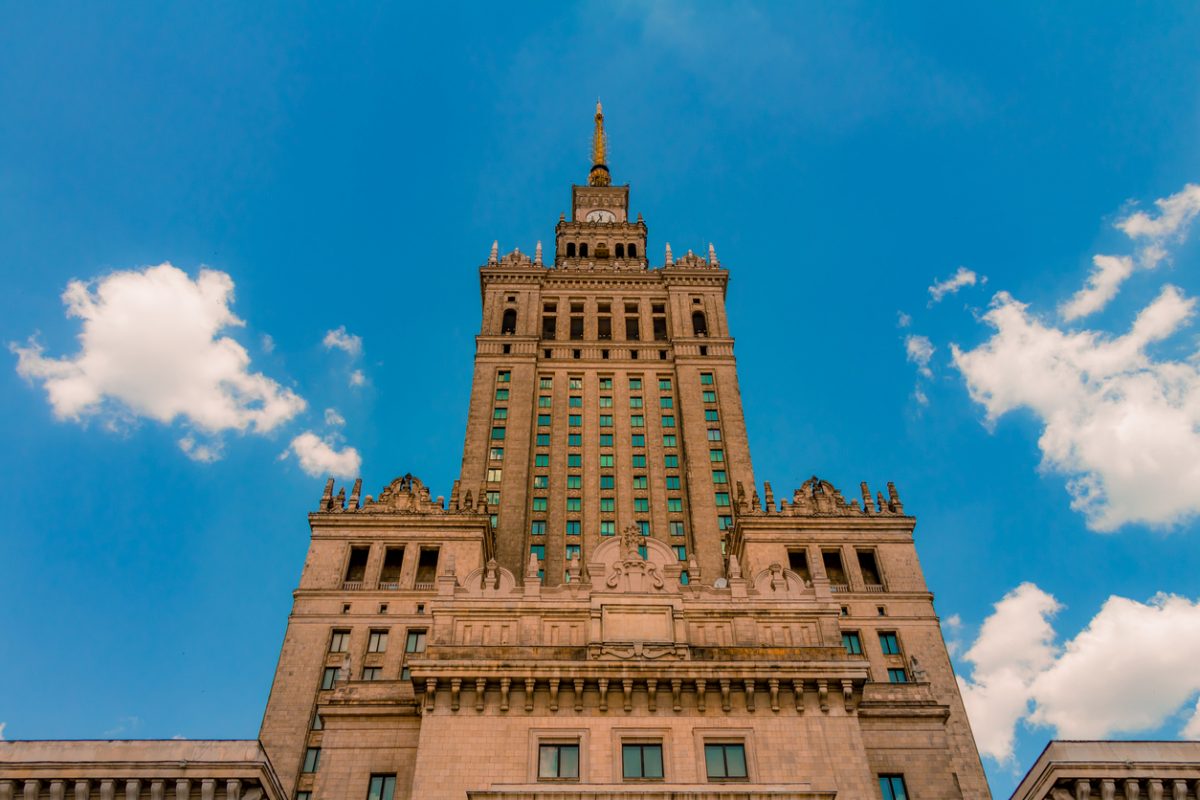
As November arrives, Warsaw transitions into the winter season, which comes earlier here than in Southern European destinations.
The last remnants of golden autumn leaves give way to barren trees.
The temperature dips and there’s often a brisk wind that rustles through the avenues.
On these days, you can see the residents of Warsaw wrapped up in warm coats, their breath fogging up in the cold air as they stride along the Vistula River or through the city’s many parks.
Days are typically overcast, and the daylight hours decrease as the month progresses.
Yet, this grey backdrop highlights the city’s rich architectural palette – the ochre hues of the Royal Castle, the golden bricks of the Barbican, and the stones of the Palace of Culture and Science are stark against the winter sky.
Though not as bustling as the summer months, November has a quieter charm.
The city’s cafés, brimming with the aroma of hot chocolate and coffee, become cosy havens.
Meanwhile, restaurants serve up hearty Polish dishes that warm from the inside, bringing comfort to the chilliest of days. There’s no day that a plate of pierogi and a bowl of borscht can’t warm up!
In November, Warsaw lights up.
Christmas decorations appear and cast a warm, inviting glow across the cityscape.
And the city’s Christmas markets open in the last week of the month, eagerly awaited by locals and tourists alike.
Reasons to visit Warsaw in November
From celebrating Polish independence to seeing the arrival of Christmas, here are the top reasons to visit Warsaw in November!
Polish Independence Day
Mark your calendar for November 11th – this is when Warsaw celebrates Polish Independence Day.
On this day, you will see the city’s central square teeming with citizens sporting white and red, the colours of the Polish flag.
The city honours the restoration of Poland’s independence in 1918 after 123 years of partitions and foreign rule.
Unfortunately, in recent years, the march has been organised by the Polish far right and has veered from patriotism to xenophobia – this was particularly prudent in 2022.
This is a real shame because the day is about Polish unity and peace, whereas marches like these only promote divisions.
However, there are other events to get involved in, including the Warsaw Independence Run and anti-fascist marches.
Monuments across Warsaw, like the Tomb of the Unknown Soldier, become focal points for honouring the sacrifice of countless individuals in the nation’s quest for freedom – which has been a tougher path than many other countries.
By the end of the day, the spectacle of fireworks bursting over the Vistula River provides a fitting end to the celebrations, painting the sky with a vibrant display that reflects on the waters below.
It’s a national holiday in Poland, so shops and restaurants may be closed.
Milder winter weather
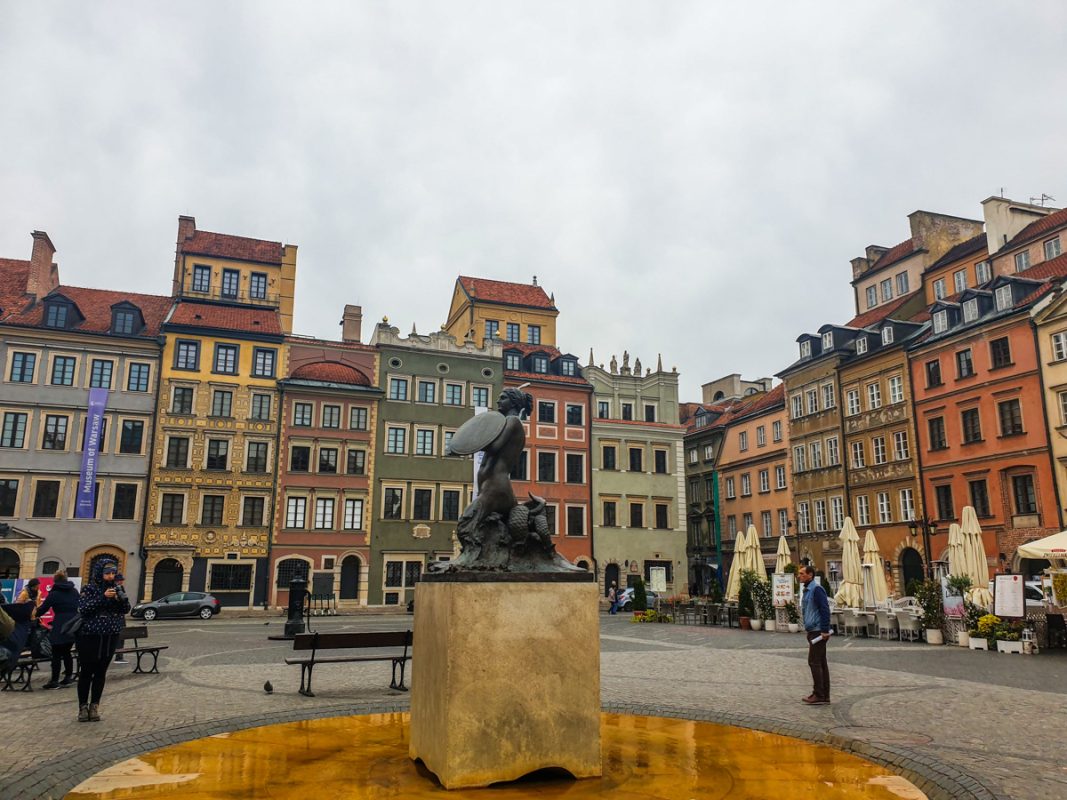
While I do believe that Warsaw is a fantastic winter city break, there’s no denying that it’s cold.
So, if you’re not quite ready to dive into a true Polish winter, then head to Warsaw in November.
November’s chill is a gentle whisper of what’s to come in December, January, and February.
During November, daytime temperatures hover around a manageable 3-5°C.
So it’s by no means a warm destination, but it’s not bone-chilling cold.
While you’ll still want a warm coat and perhaps a scarf to protect against the brisk winds, the weather is comfortable enough for leisurely walks along the Vistula River or through the city’s parks, now transformed with the stark beauty of barren trees.
The shorter days and earlier sunsets cast a different light on the city, the warm glow from windows contrasting with the cool air outside.
The change in weather also brings a different rhythm to city life.
Locals hurry home or to cosy cafés, where the scent of hot chocolate, mulled wine, or perhaps a hearty Żurek soup provides a comforting respite from the chill.
If you’re prepared to brave the outdoors, there’s something magical about Warsaw in this season.
There’s a quiet beauty in the cobblestone streets of the Old Town, with fewer tourists and a tranquil atmosphere – at times, parts of the city may be all but deserted.
Cosy cafes and hearty Polish food

As November ushers in cooler days, Warsaw’s culinary scene becomes all the more warming.
The city’s cafés and restaurants are inviting retreats, offering an escape from the chill with warm drinks and comforting Polish cuisine.
Warsaw’s cafés exude a cosy charm, beckoning visitors with the inviting aroma of freshly ground coffee and hot chocolate.
But if you want something totally soul-warming, gorge on some hearty Polish cuisine.
The scent of of bigos (a robust stew of meat, mushrooms, and sauerkraut) which is Poland’s national dish, wafts from kitchens all over the city.
Or you can savour barszcz, a beetroot soup often served with a dollop of sour cream and a side of bread and pierogi, the iconic Polish dumplings.
I love cheese and potato-filled dumplings; I could eat them every day!
While you can enjoy these dishes year-round, Polish cuisine is typically hearty and warming, ideal for a cooler day.
And where to eat these dishes? Milk Bars!
These are traditional Polish restaurants that are often government subsidised; the first opened in the late 19th century and they were popular in the Communist period.
We went to Prasowy, which dated back to 1954, and devoured a few plates of pierogi!
We also dined at the very odd Oberża Pod Czerwonym Wieprzem, a Communist-themed restaurant that was allegedly once visited by Lenin.
And I also recommend Manekin for Polish crepes.
While Polish food is excellent (and very underrated), we also ate in a Georgian restaurant during our November trip; largely because we adore Georgian food and it’s not as easy to get in the UK!
There are a few in the city, but we went to Restauracja Gruzja.
Indoor museums and attractions
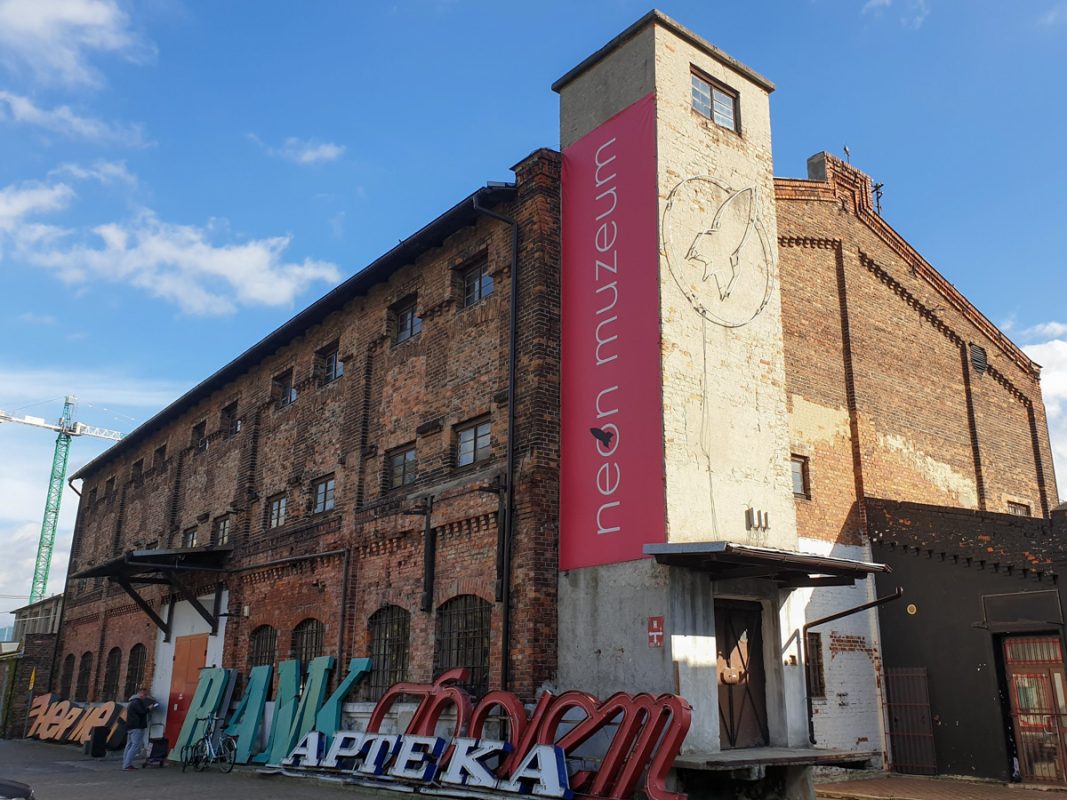
One of the main draws that make Warsaw an excellent year-round city is the sheer amount of museums and attractions.
The city’s bursting with history, and some incredible exhibits have been put up to remind you of this.
For history enthusiasts, the Warsaw Uprising Museum paints a poignant picture of the city’s past, its exhibitions a vivid chronicle of the resistance movement that courageously stood against Nazi occupation during World War II.
Equally impactful, the Museum of the History of Polish Jews spans centuries of Jewish history in Poland.
It’s one of the most extensive museums I’ve ever been to, covering the origins of Jewish people in Poland up to the modern day, of course with a large and moving section on the horrors of World War Two.
I’m a big museum person and spent half a day here, but I think even people who don’t usually like museums could pass two hours here.
Amid the cityscape of Warsaw, the Royal Castle stands majestic, its imposing structure reflecting Poland’s royal history.
Once the residence of Polish monarchs, today its lavishly decorated rooms and an extensive collection of artwork and historic furnishings provide a fascinating insight into its regal past and offer an excellent recluse from the cold.
I also love the Neon Museum in Warsaw’s Praga district.
I go into Warsaw’s all-weather attractions in my Warsaw in winter travel guide – check it out!
Christmas lights
As November progresses, the shorter days and longer nights in Warsaw begin to shimmer with the first glow of festive lights.
The city gradually decks itself in a blanket of illumination, the twinkling lights creating an enchanting canvas against the dark winter sky.
The illumination display at the Royal Garden of Light, located in Wilanów, is one of the most impressive – and last year, it started in October, so was in full swing by the time November came around!
As the evening falls, the garden becomes an ethereal realm of light and shadow, with millions of LED lights on illuminated installations.
It’s the perfect entry to the festive season!
Christmas markets

The last week in November signals the arrival of a long-awaited event in Warsaw – the opening of the city’s Christmas markets (last year they opened on the 25th).
In various corners of the city, squares and open spaces metamorphose into lively bazaars, their stalls brimming with unique crafts, festive treats, and a myriad of Christmas trinkets.
The Old Town Market Square becomes the setting for one of the city’s most vibrant markets.
Stalls display an array of handcrafted items, from amber jewellery and wooden toys to hand-painted baubles and intricate lacework.
When the chill in the air becomes noticeable, the aromatic scent of Polish Christmas delicacies beckons. From hot mulled wine and Grzane piwo (warm beer with spices and honey) to sweet treats like pierniki (gingerbread) and makowiec (poppy seed cake), there’s a whole spectrum of flavours.
I’m also a big fan of the alternative district of Praga (where there’s a fantastic neon sign museum), and there are some quirkier Christmas markets here.
Being Poland’s capital, it’s no surprise that some of the best Christmas markets in the country are here. Here are some of the others around the country.
What’s the weather like in Warsaw in November?
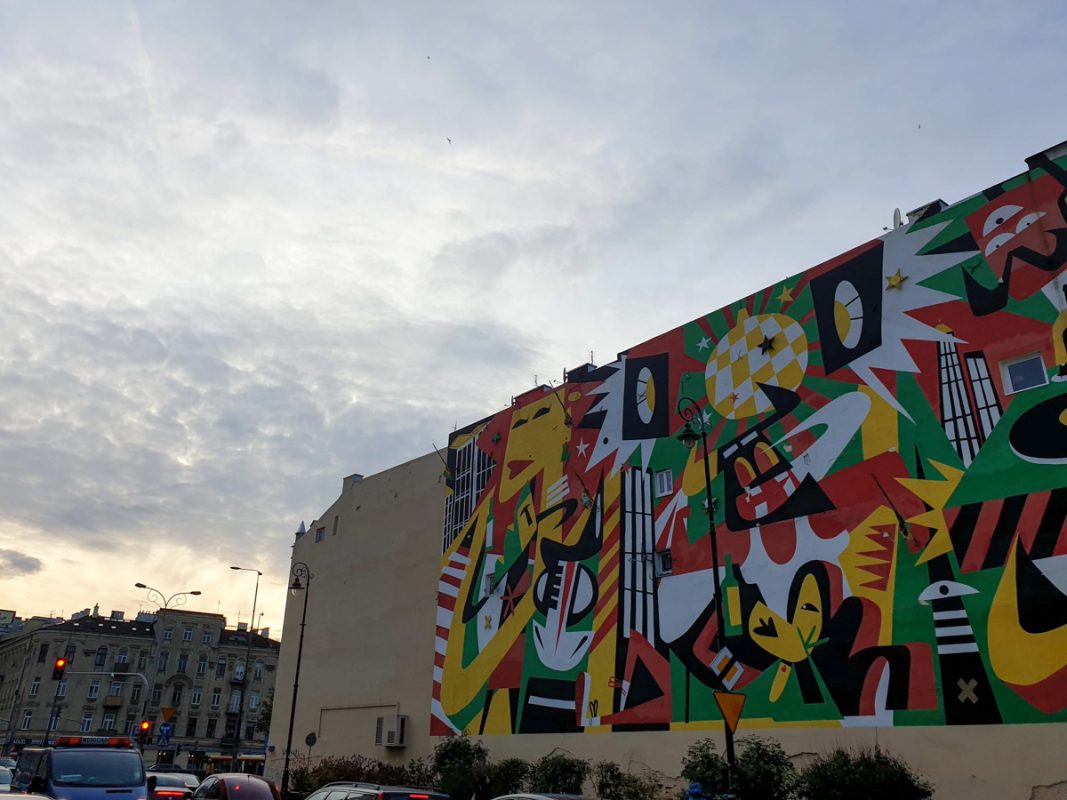
November in Warsaw welcomes the transition into winter, with temperatures dipping and the city’s scenery shifting from the vibrant hues of autumn to the soft monochrome of winter. While it’s chilly, the weather is usually more forgiving than the deeper winter months, making it an ideal time for those wanting to experience a milder Polish winter.
| Average high temperature | 7°C (45°F) |
| Average low temperature | 1°C (34°F) |
| Days of rain | 15 |
| Days of snow | 3 |
What to pack for Warsaw in November
When packing for Warsaw in November, prioritise warmth and comfort. With temperatures hovering around the freezing point, it’s essential to be prepared for the cold.
A good quality, warm coat is essential.
Opt for something water-resistant too, as November can bring both rain and the season’s first snowfall. Underneath your coat, layer up.
Pack thermal tops, sweaters, and cardigans that can be worn together.
You’ll also want to remember your hat, gloves, and scarf.
Thermal socks and warm boots are also a must, as you’ll likely spend a good amount of time walking around the city. If your boots are waterproof, even better!
Last but not least, pack a reusable water bottle. Staying hydrated is just as important in the cold as it is in the heat – I’ve always drunk tap water in Poland and never had any issues.
Things to do in Warsaw in November
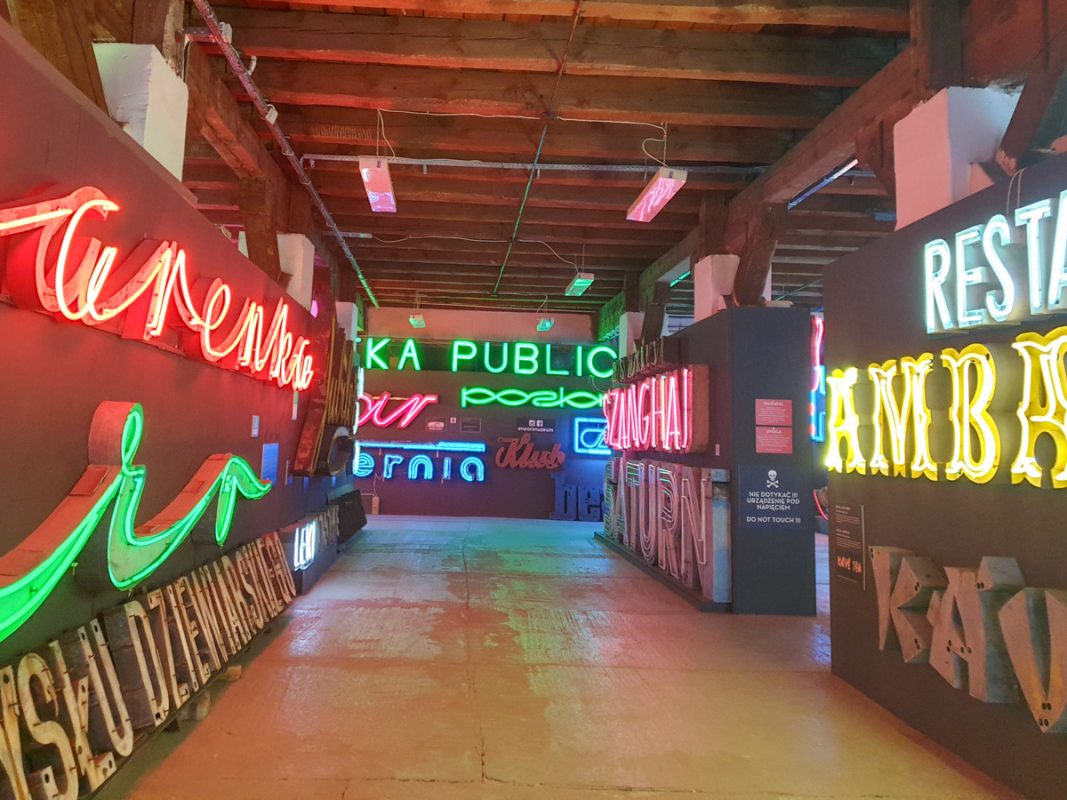
- Wander through The Royal Garden of Light to see its otherworldly illumination display.
- Visit the Palace of Culture and Science for panoramic views of the city from its 30th-floor terrace.
- Discover the city’s history at the Warsaw Uprising Museum.
- Stroll down the bustling Nowy Świat Street, lined with shops, cafes, and historic landmarks.
- Browse the stalls at the Christmas markets, particularly the one in Old Town Market Place.
- Immerse yourself in the world of science and technology at the Copernicus Science Centre.
- Explore the stunning interiors of Wilanów Palace, the former royal residence known as ‘The Polish Versailles’.
- Visit the impressive POLIN Museum of the History of Polish Jews.
- Spend a quiet afternoon inside the beautifully designed University of Warsaw Library, and its roof garden.
- Enjoy a cosy evening at a traditional Polish restaurant, such as Podwale 25, to taste local cuisine.
- Walk through Łazienki Królewskie Park-Palace Complex.
- Explore the artistic Praga district (don’t miss the neon sign museum).
- Marvel at the collection of masterpieces in the National Museum in Warsaw.
- Visit St. Anne’s Church for its stunning architecture and views over the Old Town.
- Enjoy a performance at the Grand Theatre-National Opera, one of the largest theatres in Europe.
Considerations for visiting Warsaw in November
- Prepare for the cold: While November weather is generally milder compared to the later winter months, temperatures can drop close to or below freezing. Dress warmly and layer your clothing.
- Check opening hours: Some attractions may have shorter opening hours or could be closed on certain days in the off-peak season.
- Stay flexible: With unpredictable weather, having a flexible schedule can be helpful. Plan indoor and outdoor activities so you can adjust based on the day’s weather.
- Book accommodation early: If your visit coincides with Polish Independence Day or the start of the Christmas markets, accommodation might be in high demand. Booking in advance is recommended.
- Be prepared for early darkness: The sun sets early in Warsaw in November. If you have outdoor activities planned, aim to start your day earlier.
- Get to know public transportation: Warsaw’s public transport system is efficient and can save you from long walks in the cold. Familiarise yourself with the network and consider purchasing a transport pass for your stay. The ride-sharing app Bolt also works well in Warsaw.
- Stay hydrated: In the cold, it can be easy to forget to drink enough water. Carry a reusable water bottle to stay hydrated!
Are you ready to visit Warsaw in November?
Discover Polish history, devour Polish food and get into the Christmas spirit early – there are lots of reasons why Warsaw in November should be on your list!
The capital’s been at the epicentre of European history for centuries, and with fewer crowds and cooler (but not too cold) weather, November’s an ideal time to visit.

